The renowned location of this post is said to be one of the most visited by Orchid enthusiasts anywhere in the British Isles. This chalk hilltop above the north bank of the Oxon Thames is one of just two national sites for Monkey Orchid. In 1998 two Lady Orchids appeared amidst the historic colony, most probably due to seed being planted, then from 2006 hybrids began to flourish. Nowadays the prize is to identify pure specimens of each species amongst the proliferation of continually developing hybrid forms. In 2023 there were just two pure Lady Orchids here and around 10 of the smaller, later Monkey Orchid. These images (below) are my only past records of each, from Provence in 2016 (left) and Hartslock itself a year later (right).


The two species readily hybridise when they coincide, as I also experienced in les Cévennes, France in May 2016 (see here). On what became a pleasant, sunny morning on 1st I walked out a mile or so from Goring-on-Thames along Gatehampton Road to the Hartslock Reserve entrance (RG8 0EP, SU 616796 – see here). There is no parking there. Continuing steeply uphill and through the right hand gate of two, upon reaching a taped-off enclosure I gasped out loud. There was a profusion of statuesque Orchids on the slope above, that by their size had clearly enjoyed recent soggy conditions. Almost all were hybrids, that occur only at this place nationally and dwarf both the pure forms..
The darker red item (left and centre) in the pictures below was the one true Lady Orchid I picked out. The right hand picture (courtesy of Ian Lewington) is from the site two years ago, for comparison. This is a distinctive and stately plant, from 30 – 80 cm tall, in which up to 200 deep red and white flowers per spike resemble a little figure wearing an old fashioned lady’s bonnet and polka-dotted ball gown. It favours short grassland on woodland edges, as at this location, and sometimes grows in open woodland. The species has now vanished from most of it’s historic British range. It is now confined to just a few sites in Kent and here.

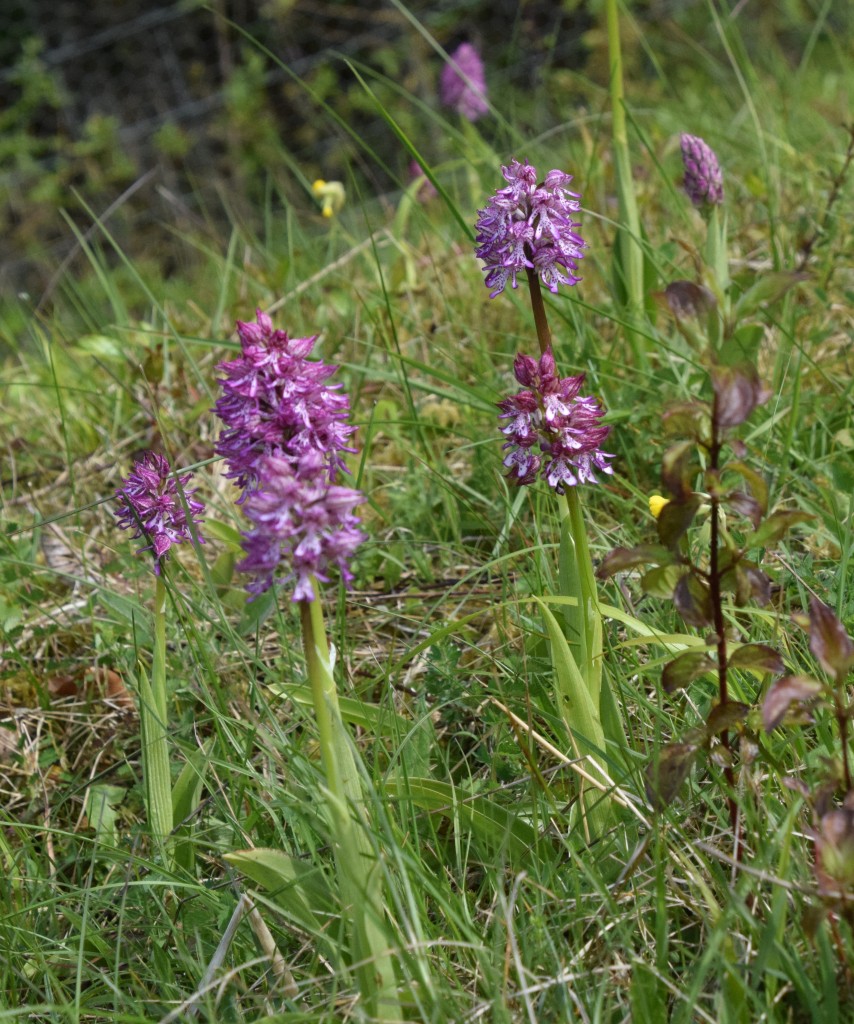

© Ian Lewington
The one or two of this rarity that remain at Hartslock do not self-pollinate and so struggle to produce more of their own kind. Some of the hybrids, also known as “Lankey Orchids” in the following sequence were more ladylike than others, but the true difference is in the colouring. That is to say the bonnets might be there but they are pink rather than wine-coloured. These plants are much larger than either of the pure forms, and some of the flower stems were very densely packed. All these subjects were close enough to record with my 300mm telefoto from outside the enclosure. There is no need to step inside, as visitors are requested not to do.




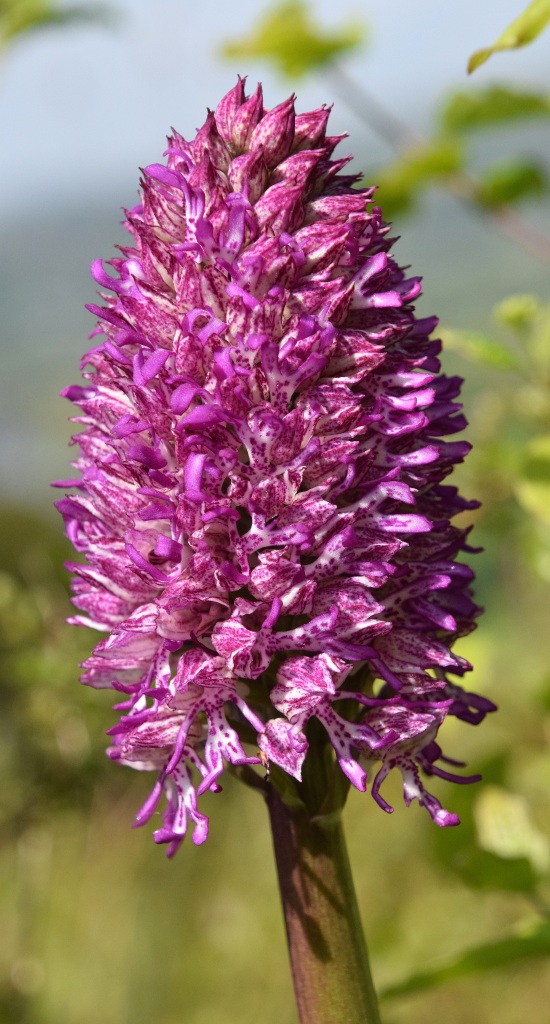



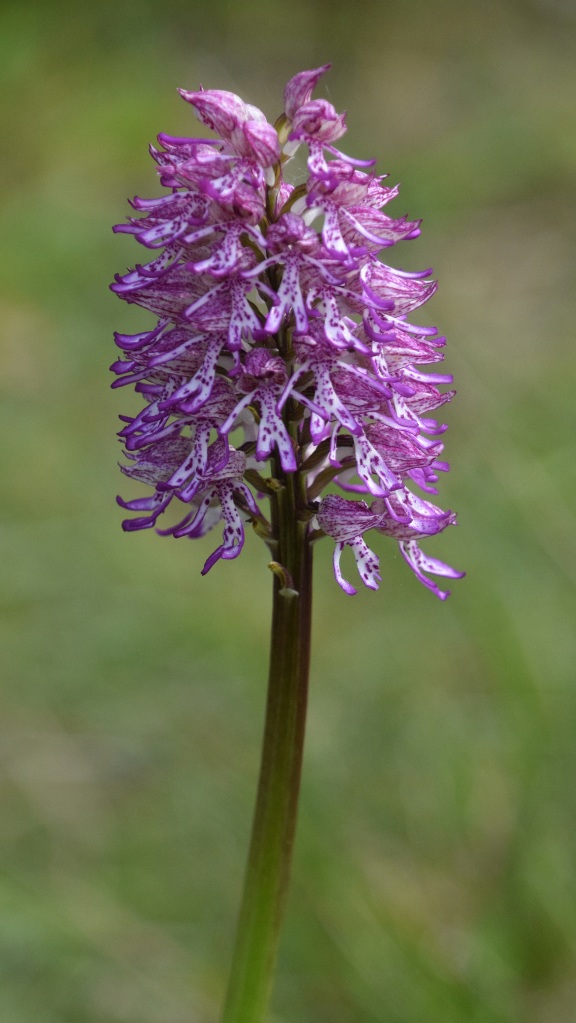
Lady x Monkey Orchids (all images)
Going into more detail now, to quote the Hartslock warden’s own web site (see here), these Lady x Monkey hybrids have the following mix of features:
- the lip shape is like Monkey orchid but the legs are thicker
- the hood is strongly speckled (like Lady Orchid) with a deep purple colour (like the lip colour of a Monkey Orchid). The hood of both Monkey and Military Orchids is most often very pale (almost white) with streaks of purple scattered sparsely across the surface
- flowering period was 5 days after the Lady Orchids and 1 week before the bulk of the Monkeys
- the hybrids are much larger and more vigorous than the normal Monkey Orchid and much closer in form to the Lady Orchid
- flowers open from the bottom up as in Lady Orchid – not top down like the Monkey Orchid
- foliage is lush and bushy, like the Lady Orchid but is a grey-green, like the Monkey Orchid
Hartslock is one of just three British Monkey Orchid sites, the other two also being in Kent. This distinctive plant typically grows to 15 cm, but can reach 30cm in height on sunny, south facing chalk grassland such as here or woodland edges. It is unique amongst British wild Orchids in that the flowers open and then go over from the tip of the spike downwards, giving it a rather top heavy, even untidy appearance. White-toned with lilac-rose highlights, the blooms have a long pointed hood and suggest the straggly arms, legs and tail of monkeys (pictured below, right). Depending upon the angle the whole is viewed from, as in this post’s lead picture, there is also the suggestion of faces peering out from within.



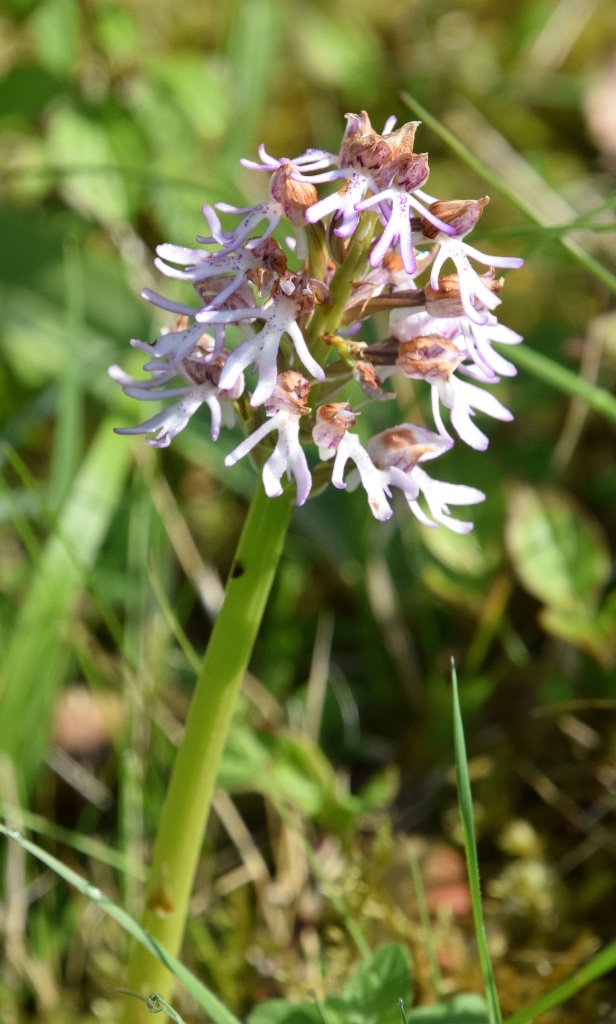

I returned here to look for them on 7th, by when settled fair weather had arrived at last. One emergent plant noted six days earlier, right at the top of the slope near a gate into the next field, now confirmed itself as a Monkey Orchid (pictured above, top row). A second specimen (above, centre) within the main profusion of hybrids was already going over from the top down, this being a short-lived species whose flowers open in quicker succession than many other Orchids. It and a third candidate (right) suggested themselves as being in an early phase of hybridisation, as indicated by their monkeys’ thicker legs. There was no sign of the lone Lady Orchid from six days previously on this re-visit.

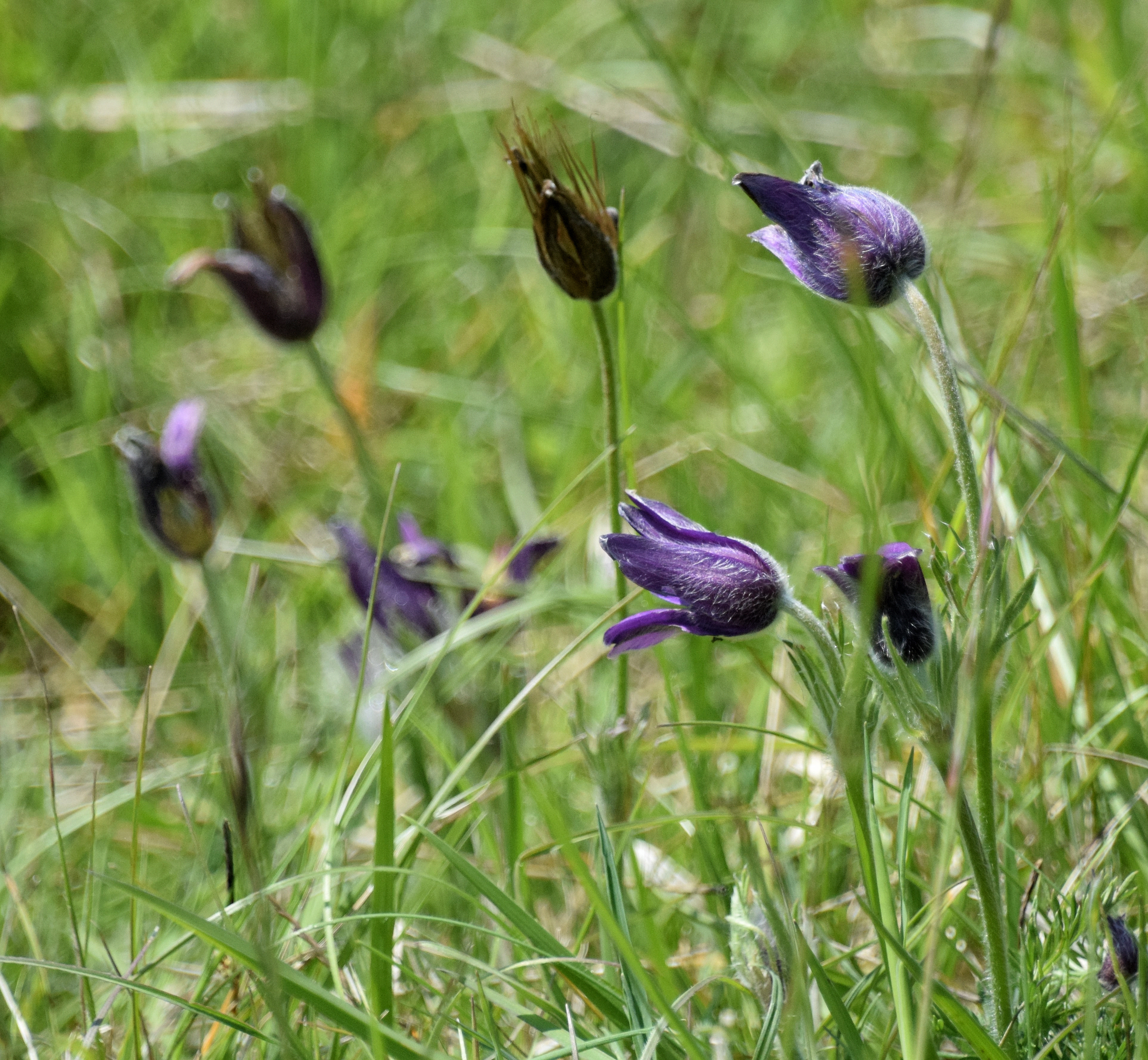
Another notable scarce plant at Hartslock is Pasque Flower (pictured above), that are concentrated in the field beyond the Orchid slope. Though cultivated forms are freely available through the horticultural trade, the wild original is now restricted to undisturbed chalk grassland at just a handful of sites in the Chilterns, Cotswolds, East Anglia and Lincolnshire. The velvety-purple blooms of these low growing plants rise above a cushion of feathery grey-green leaves amongst the short sward. Their open, upward-facing bells contain a contrasting golden-yellow stamen-filled centre. When I reached them they disappointed as being April flowering they had mostly gone over. These were a quite stimulating two days and I feel glad to have added another of Oxon’s botanical treasures to this journal.
